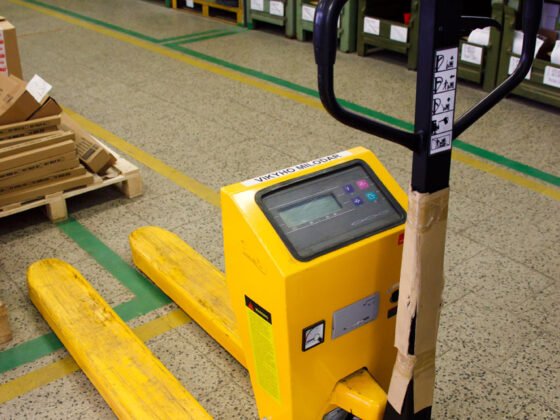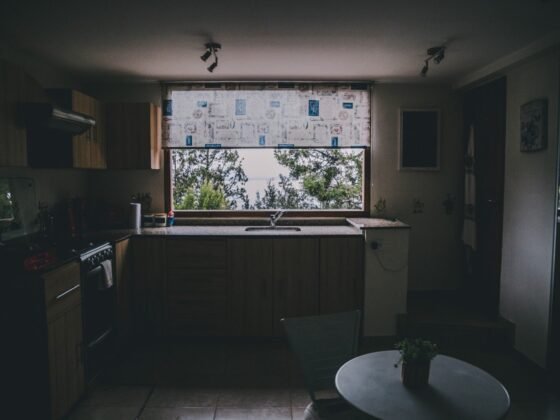Table of Contents Show
Security doors in today’s time are designed to keep businesses safe by creating a solid barrier against potential threats.
These doors are like guardians, preventing unauthorized entry and keeping out people who shouldn’t be there.
High Security Doors protect valuable items and confidential information from theft and damage.
Security doors also help businesses follow safety regulations by controlling access to hazardous areas.

With their robust build and features like locks and access control systems, security doors ensure that only authorized individuals can enter.
This combination of security measures promotes a safe and secure environment, allowing businesses to operate confidently and focus on their success.
In this guide, we will explain a Step-by-Step Installation Guide for Commercial Property Security Doors. Properly installing security doors through this guide significantly enhances business safety.
By following each step meticulously, businesses can ensure that their security doors are effective barriers against potential threats.
Choosing the Right Door: Picking What Fits
Before installing security doors, we need to get ready. It’s like preparing before cooking.
We gather tools and measure the place where the door will go.
It makes sure everything goes smoothly. Just like we choose shoes that fit us, we need doors that fit our properties. Security doors come in different styles and materials.
We choose one that works well for our business and matches its appearance.
Learning from the Manual: Reading the Instructions
When we buy a new gearbox, we read the manual to understand how it works.
Security doors come with instructions too, which is like a guidebook. It tells us how to install the door correctly. By reading and understanding the instructions, we ensure we’re doing things correctly.
It helps us avoid mistakes, ensures that the security door works appropriately, and provides the protection we need for our business.
Step-by-Step Installation: Putting the Door In
Before we begin, we need to check everything. It’s like making sure we have all the ingredients before cooking.
We inspect the door and its parts to make sure they are okay.
Read Also :
Now it’s time to install the door. We take out the old door if there is one.
Then we prepare the place where the new door will go and start measuring all the details so that we can be sure that the door will be fixed properly at the right place.
Fixing the Door in Place: Attaching the Door
Fixing the door in place is the next step. It can be as easy as attaching a piece to the puzzle.
We attach the door carefully to the spot we prepared earlier. It is done using solid screws and proper hardware.
Take another look to see if the door is correctly attached to the frame because if it is not correctly installed, it will damage the door.
This step is vital so the door works well, provides the necessary security, and withstands any pressure when the weather is not correct.
Locks and Handles: Making it Work
Now it’s time to make the door functional. Like adding wheels to a toy car, we install locks and handles.
Locks keep the door closed and secure, while handles allow us to open and close it quickly.
We make sure the locks align correctly, and the handles operate smoothly.
This step is like giving the door its unique abilities, ensuring it provides security and convenience for those who use it.
Checking Everything: Testing the Door
After installing the door, we need to make sure it works properly.
It is like trying out a new toy to see if it functions correctly.
We open and close the door to see if it moves smoothly and locks securely.
We check if the locks and handles work as they should. Testing the door ensures everything is in order and will provide the security and ease of use we expect.
Adding Special Features: Making it Even Safer
Some security doors have extra features that make them even safer.
These are like bonus abilities in a video game. We might add things like electronic locks, access cards, or codes.
These unique features add another layer of security. Only those with the correct code or card can open the door.
It’s like having a secret code to unlock a treasure chest. Adding these features enhances the door’s protective capabilities and makes it even more effective in keeping businesses safe.
Final Check: Making Sure It’s Right
Before we finish the installation, we do a final check to ensure everything is perfect.
It’s like proofreading a story to catch any mistakes. We look at the door from top to bottom, checking if it’s straight, secure, and working well.
We make necessary adjustments to ensure the door fits perfectly and operates smoothly.
This step ensures that we’ve done a thorough job and that the security door is ready to provide reliable protection for businesses.
Getting Help When Needed: Asking for Support
Sometimes things go differently than planned. It’s okay to ask for help.
MaxiDoor has experts available to help you install the door and even manufacture the way you planned.
They are fast workers who know about security doors and can help us fix any problems.
If you have a property or new office premises, they can even visit the place and suggest which door you should choose.
Whether security doors, high-security doors, burglary security doors, or any other door, they have the right solution to offer you.
Making Businesses Safer
Installing doors that fit perfectly within their frames and securing them with solid hardware prevents unauthorized entry and deters intruders.
Proper installation of locks and handles ensures that the doors can be easily operated by authorized personnel while maintaining security.
Integration of access control systems adds an extra layer of protection, allowing only authorized individuals to enter.
Weatherproofing and insulation measures also ensure a comfortable indoor environment while maintaining security.
By carefully following this installation guide, businesses create a comprehensive security solution that safeguards against theft, vandalism, and unauthorized access, providing a safer and more secure environment for employees, assets, and confidential information.










